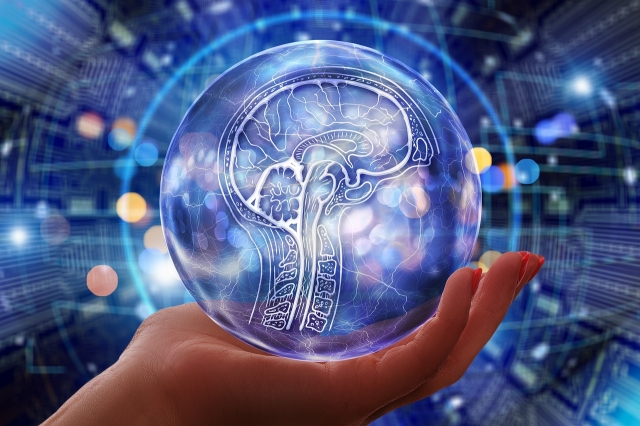Deepfake exploits the resources of artificial intelligence to manipulate a video or sound. This fraudulent approach aims to create hoaxes and false information whose harm can be more or less serious.
What is deepfake?
In 2014, a technique invented by researcher Ian Goodfellow led to deepfakes. This is GAN (Generative Adversarial Networks). According to this technology, two algorithms train each other: one tries to make counterfeits as reliable as possible; the other attempts to detect fakes. This way, both algorithms improve together over time through their respective training. The greater the number of samples available, the greater the improvement in these.
The deepfake phenomenon was created in Autumn 2017 and appeared on the Reddit website. Since 2017, the number of deepfakes has augmented significantly. Depending on researchers from Deeptrace, the number of deepfake videos found online in 2019 was around 15,000, compared to just under 8,000 videos registered a year earlier.
The deepfake uses technological developments to modify a file that contains a video or sound. Carrying out this “deep faking” consists of causing harm by knowingly diverting a person’s image or voice. It is thus possible to lend him a behavior or remarks that he does not share.
Concerning audio deepfakes, the creation of these requires very significant material resources, so for the moment, it is mainly the responsibility of professionals in this field.
What are the main deepfake techniques?
There are several synthesis and editing techniques to create a deepfake:
“Face Swap”: this is the most common method of replacing an individual’s face while keeping their body. For a credible rendering, the proportions must be similar.
The "Face to Face": the principle is similar but more subtle because we only invert the mouth of another person. With an equivalent intonation, an imitator can therefore make the model say anything.
The “Lip Sync": this deepfake does not change anything in the original support except the lip synchronization to obtain an even more realistic and disturbing result than the "Face to Face."
How do Deepfakes work?
Deepfakes are based on the technique of GANs or generative adversarial networks. It is a Machine Learning technique consisting of putting two algorithms in competition.
From images provided upstream, the first “generator” algorithm seeks to create fake imitations that are as believable as possible. The second “discriminator” algorithm, on the other hand, seeks to detect fakes as efficiently as possible.
Over time, the two algorithms progress in their respective tasks. The first continues to produce fake videos until the second can no longer detect the deception. The result is, in the end, "fakes" realistic enough to deceive even humans...
The more data provided to the algorithm at the beginning of the process, the easier it will be able to learn how to create fakes. This is why former US presidents and Hollywood stars are often used to create Deepfakes: many archive videos are freely available and can be used to feed Machine Learning models.
What are the risks associated with deepfakes?
Thanks to AI, anyone can easily create deepfakes without special technical knowledge by downloading a simple application like FakeApp. By analyzing the movements of our faces, the application's algorithm will be able to "rejuvenate" or "age" us quite simply, for example. Of course, these are not elaborate deepfakes to create false content that can be compromising, but these will become more realistic as technology evolves and, therefore, more and more problematic...
With the advent of fake news and its harmful effects on social networks, the dissemination of deepfake on the web, therefore, constitutes a new technological threat.
Manipulation, disinformation, humiliation, defamation... the dangers of deepfakes will be more and more numerous. This is why Google published, in September 2019, a database of just over 3,000 deepfake videos, which helps engineers and researchers trying to create automated detection tools based on AI. This would also increase the effectiveness of these tools, especially as Google continues to feed this database.
Examples of Deepfakes
There are various examples of deepfakes that have made international headlines. This is particularly the case of a speech by Barack Obama which openly insults Donald Trump. Mark Zuckerberg has also been a victim of this process, with videos that implicate him in criminal organizations or plots for planetary domination.
Do Deepfakes have benefits?
Yes, there are a diversity of legitimate applications of deepfake technology. For example, it can be used in movies with consistent storylines when the actors themselves are unavailable for some unavoidable reason.
Deepfakes are so compelling that they could show characters in their youth or replace deceased characters. However, only time will tell if this technology makes its way into the film industry and replaces CGI techniques.
The fashion retail industry can also greatly benefit from this technology, as it has sought ways to virtually dress its customers. For example, Deepfakes would allow shoppers to see what a particular piece of clothing will look like before committing to a purchase.
The most Popular Deepfake Apps and Software in 2022
-
Face App
FaceApp allows users to transform their photos with AI. In addition, it offers a variety of effects, backgrounds, and filters that you can use to change your look.
-
Zao
Zao is a face swap app that went viral not too long ago. Not only does this allow two people to change faces, but it also adds your own face to any video.
-
Reface
Reface is among the most well-known deepfake apps in the world. It overlays your face on images, memes, and GIFs using face-swapping AI.
-
SpeakPic
As the name suggests, SpeakPic allows users to make their photos speak using Artificial Intelligence. Just register or type any text, and it will say whatever you want.
-
DeepFaceLab
DeepFaceLab is the leader in deepfake software. The open-source deepfake system can swap faces in video or images and more.
-
FakeApp
FakeApp is another popular deepfake software that allows users to upload faces in videos with their own or someone else's.
-
Reflect
Reflect is one of the most realistic face swap apps. It perfectly swaps any face in video games, statues, paintings, and more.
-
Deepfakes Web
It is probably the best deepfake maker online. It uses a machine-learning algorithm to swap the subject of one video with another.






